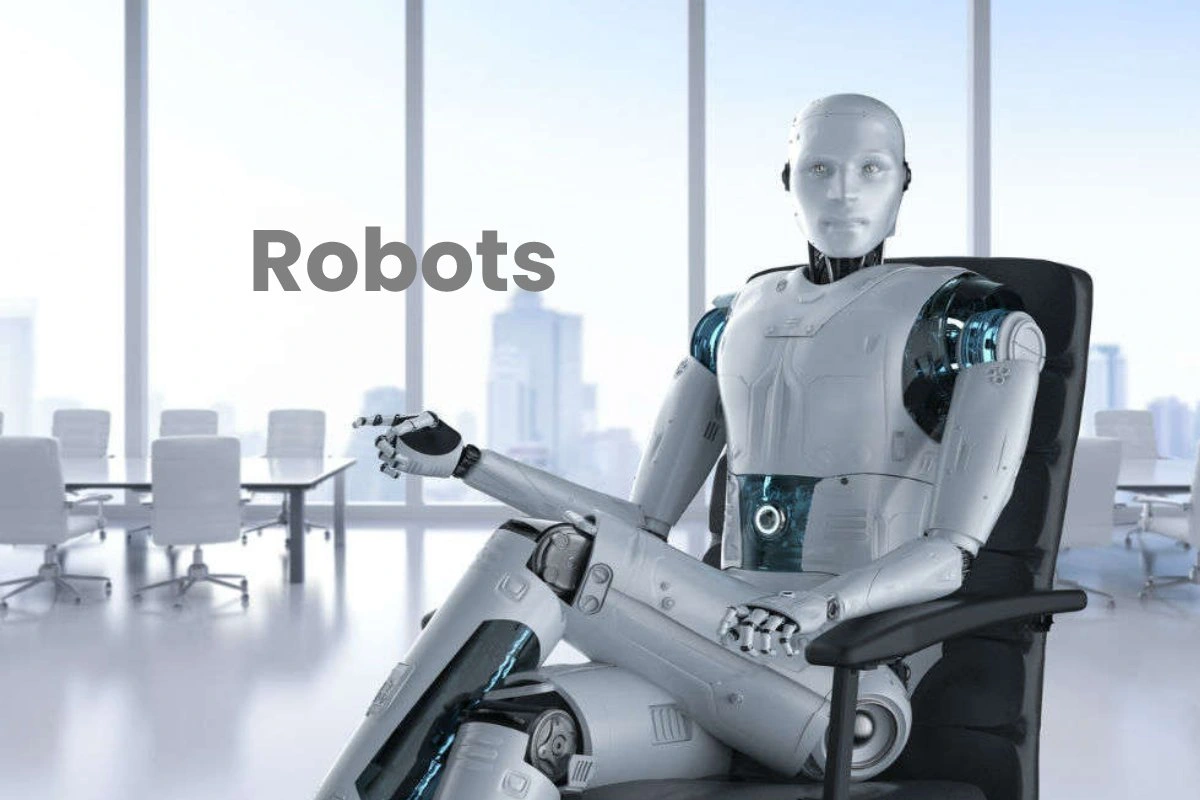What are Robots?
Robots are the product of robotics, where programmable machines are built that can help humans or imitate human actions. It was initially designed to handle monotonous tasks (like building cars on an assembly line) but has since expanded far beyond its original uses to perform tasks like fighting fires, cleaning the house, and helping with incredibly complex surgeries.
Each robot has a different level of autonomy, ranging from human-controlled robots that perform tasks over which a human has complete control to fully autonomous robots that perform tasks without outside influence.
Types of Robots
Mechanical robots come in all shapes and sizes to efficiently perform the task for which they design. All vary in terms of design, functionality, and degree of autonomy. From the 0.2-millimeter-long “RoboBee” to the 200-meter-long robotic transport ship “Vindskip,” robots emerge to perform tasks humans cannot do. Generally, there are five types of robots:

1. Preprogrammed Robots
Preprogrammed robots operate in a controlled environment where they perform monotonous and straightforward tasks. An example of a pre-programmed robot would be a mechanical arm on a car assembly line. The component performs a function: welding a door, inserting a specific part into the motor, etc. And also, your job is to perform this task longer, faster, and more efficiently than a human.
2. Humanoid Robots
Humanoid robots are robots that resemble and mimic human behavior. These robots often perform human activities (such as running, jumping, and carrying things) and are sometimes designed to look like us, even with human faces and also expressions. Two of the best-known humanoid robots are Sophia from Hanson Robotics (in the video above) and also Atlas from Boston Dynamics.
3. Autonomous Robots
Autonomous robots operate independently of human operators. These robots are generally designed to perform tasks in open environments that do not require human supervision. They are unique in using sensors to perceive the world around them and then employ decision-making structures (usually a computer) to take the optimal next step based on their data and mission. An example of an autonomous robot would be the Roomba vacuum cleaner, which uses sensors to move freely around the house.
Examples of Autonomous Robots:
- Cleaning robots (for example, Roomba)
- Robotic lawnmowers
- And also, Bot hosts
- And also, Medical auxiliary robots
4. Remotely Operated Robots
Remotely operated are semi-autonomous robots that use a wireless network to allow human control from a safe distance. These generally work in geographical, climatic, detailed conditions, etc., extremes. Examples of remotely operated are human-controlled submarines used to repair underwater pipeline leaks during the BP oil spill or drones used to detect land mines on a battlefield.
5. Increase Robots
Augmentation robots enhance current human abilities or replace abilities that a human may have lost. And also, the field of robotics for the human increase is an area in which science fiction could become a reality very soon, capable of redefining humanity’s definition by making humans faster and more robust. Some examples of current augmentation robots are robotic prosthetics or exoskeletons that use to lift heavy weights.
Applications of Robots
- Help fight forest fires;
- Work alongside humans in manufacturing plants (called co-bots);
- It provides companionship for the elderly.
- And also, Surgical assistants;
- Last-mile food ordering and parcel delivery;
- An autonomous home that performs tasks such as vacuuming and mowing lawns;
- Help find items and transport them to warehouses.
- Used in search and rescue missions after natural disasters;
- And also, Mine detectors in war zones.
What are the Uses of Robots?
Robots have a wide variety of use cases that make them the perfect technology for the future. We will soon see all over the place. We will see them in our hospitals, in our hotels, and even on our roads.

1. Manufacturing
The manufacturing industry is perhaps the oldest and best known among robot users. These and co-bots (bots that work with humans) efficiently test and assemble products, such as cars and industrial equipment. It estimates that there are currently more than three million industrial in service.
2. Logistics
Shipping, handling, and quality switch are becoming a staple for most retailers and logistics companies. Because we now expect our packages to arrive at breakneck speeds, logistics companies use them in warehouses and even on the road to maximize time efficiency. Right now, some take your items off the shelves, haul them across the warehouse floor, and pack them up. Additionally, an increase in last-mile (it will autonomously deliver your package to your doorstep) ensures that you will have a face-to-face encounter with a logistics robot soon.
3. House
This is no longer science fiction. And also, it can see all over our homes, helping with household chores, reminding us of our schedules, and even entertaining our children. The best-known example of household robots is the Roomba autonomous vacuum cleaner. Plus, it has now evolved to do everything from independent lawn mowing to pool cleaning.
4. Travel
Is there anything that looks more like science fiction than autonomous vehicles? These self-driving cars are nothing more than the imagination. With a combination of data science and robotics, autonomous vehicles take the world by storm. And also, automakers similar to Tesla, Ford, Waymo, Volkswagen, and BMW are working on the next wave of travel that will allow us to sit back, relax and enjoy the ride. Rideshare businesses Uber and Lyft are also developing self-driving ridesharing vehicles that don’t require humans to drive the car.
5. Healthcare
And also, it has made great strides in the healthcare industry. These mechanical wonders use in almost every aspect of healthcare, from robot-assisted surgeries to help humans recover from physical therapy injuries. Examples of working in healthcare are Toyota’s health assistants, which help people regain the ability to walk, and “TUG,” a robot designed to move autonomously around a hospital and provide everything. From medicines to clean bedding.
Recently, pharmaceutical companies have used to help speed up the fight against COVID-19. These now fill and seal COVID-19 test swabs and use some manufacturers to produce PPE and respirators.
Check out Stages of Automation in Manufacturing
Conclusion
It is the intersection of science, engineering, and technology that crops machines to replace (or replicate) human actions. Pop culture has always been fascinated by it. R2-D2. Optimus Prime. WALL-E. These exaggerated humanoid concepts often look like a caricature of reality, or are they more progressive than you think? And also acquires intellectual and mechanical abilities that do not put the possibility of an R2-D2 type machine beyond their reach in the future.
Also Read: Single User Operating System – Definition, Types, and More







